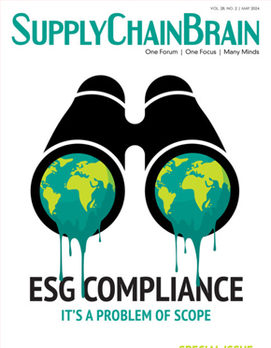
The bill of lading is one of the most important documents in the logistics industry. It protects the needs of three major parties in a transaction — shippers, carriers and retailers — throughout all stages of the process. Physical BOLs, however, increase drive and dwell time, and can lead to inaccuracies in delivery.
While physical paperwork has long been the go-to form of communication within the supply-chain industry, electronic BOLs are expected to become the standard moving forward. They create visibility and efficiency among shippers, carriers and retailers, as well as lessen drivers’ health and safety risks, free up space, and reduce environmental impact.
Visibility
Losing sight of a package in the shipping process can be frustrating for consumers. Suppliers and retailers feel the same when they’re unable to locate a truck carrying an anticipated load. As long as the supply chain continues to rely on physical BOLs to relay critical information, such as driver location and dwell time, latency of that information will continue to exist. Electronic BOLs ensure clear and accurate information from pickup to dropoff. By providing real-time information, shippers, carriers and retailers are able to make real-time decisions about routing materials to manufacturing plants, engaging in replenishment planning, handling customer complaints, and ensuring timely payment. But in order to maintain visibility, the integration of electronic BOLs must be adopted by every partner in the supply chain. Without industry standardization, system complexity, data management and interoperability will become more challenging.
Efficiency
Much like a stop light or traffic jam during a road trip, physical BOLs affect the amount of a carrier’s drive time. If required to enter and exit the cab to deliver physical BOLs, drivers can feel like they’re spending more time chasing paper than on the road to their next stop. The use of electronic BOLs, by contrast, allows a driver to remain in the cab while delivering and receiving necessary information, reducing the amount of time spent waiting for physical BOLs to be approved and signed, These advantages prove beneficial not just to the driver, but to the carrier, shipper and receiver as well.
Additionally, electronic BOLs generate important data through key performance indicators (KPIs), including on-road hours, average time to load, and inventory levels. While many companies track KPIs to monitor the overall customer experience, the data is also important in maintaining smooth operations. Often shipping managers utilize it to reduce the chances of a facility shutting down due to compliance violations, or to prevent teams from running out of supplies in the warehouse.
Sustainability
The phrase “drowning in paperwork” surely comes from the supply-chain industry. While BOLs are the most important piece of paperwork, they often end up tossed in a box, on a shelf, or in the warehouse at the end of the day. As a result, companies are forced to purchase extra space to store the thousands of boxes accumulated throughout the year. By contrast, electronic BOLs can be stored on a computer, external hard drive or even in the cloud, saving space that can serve a greater purpose for the company or community. What’s more, the elimination of paper results in a much-reduced impact on the environment.
Health and Safety
In the current pandemic, face-to-face interactions are ill-advised. However, the use of physical BOLs forces drivers into precarious situations, putting themselves and others at risk. Each stop requires the driver to encounter multiple people, including those in the guard shack, main office and loading dock. Over time, these mounting interactions significantly raise the risk factor for the driver. By utilizing electronic BOLs, drivers are able to remain in the cab while continuing to exchange necessary information, without the need of a face-to-face interaction.
In recent years, the electronic BOL has become more popular, and with good reason. With the impact of COVID-19 on the industry, shippers, carriers and retailers are looking for ways to keep their employees safe, and deliveries on track. Electronic BOLs provide greater visibility, efficiency, health and safety. But only time will tell how long it is before they become the industry standard.
Will Chu is cofounder and CEO of Vector, a contactless pickup and delivery platform.




.jpg?height=100&t=1715228265&width=150)


